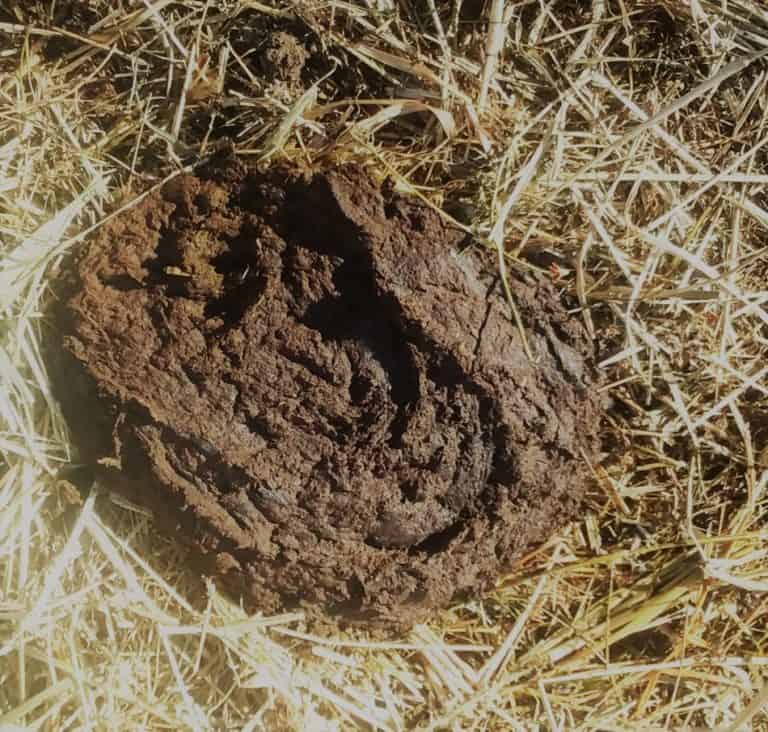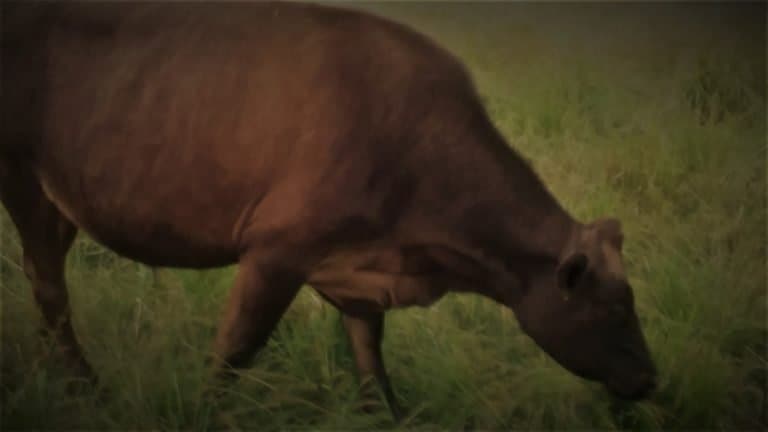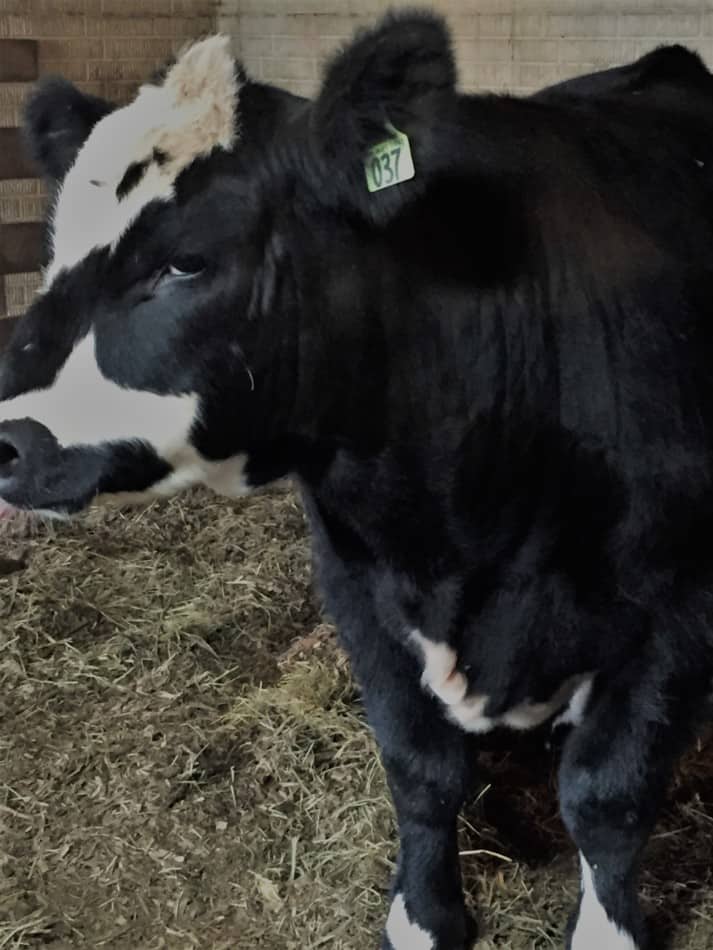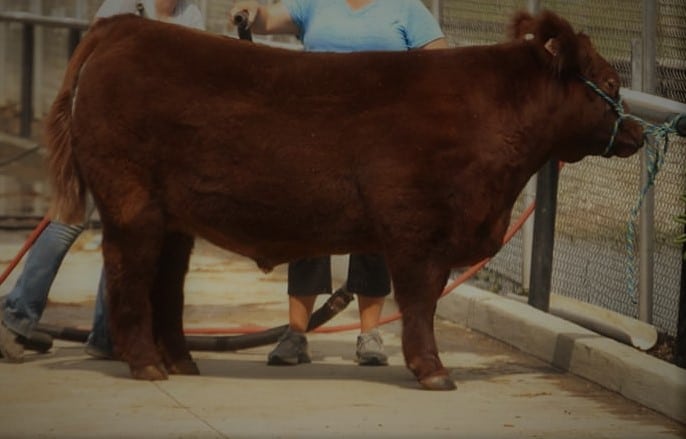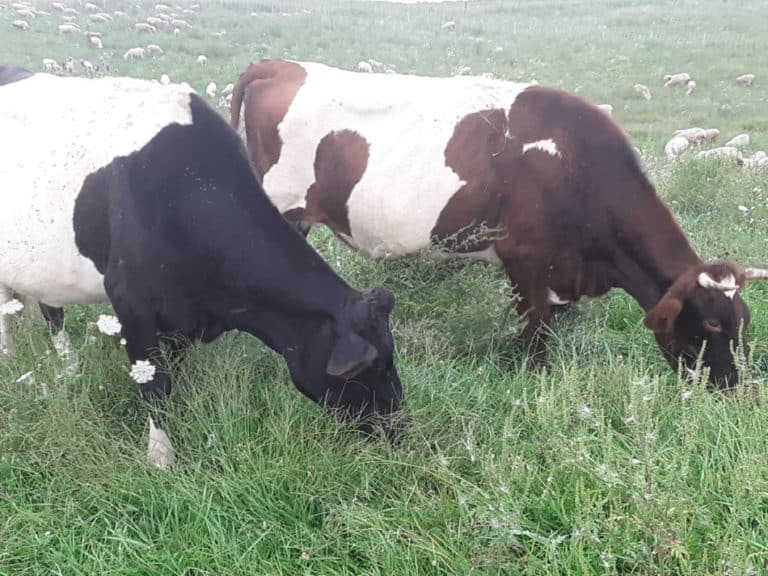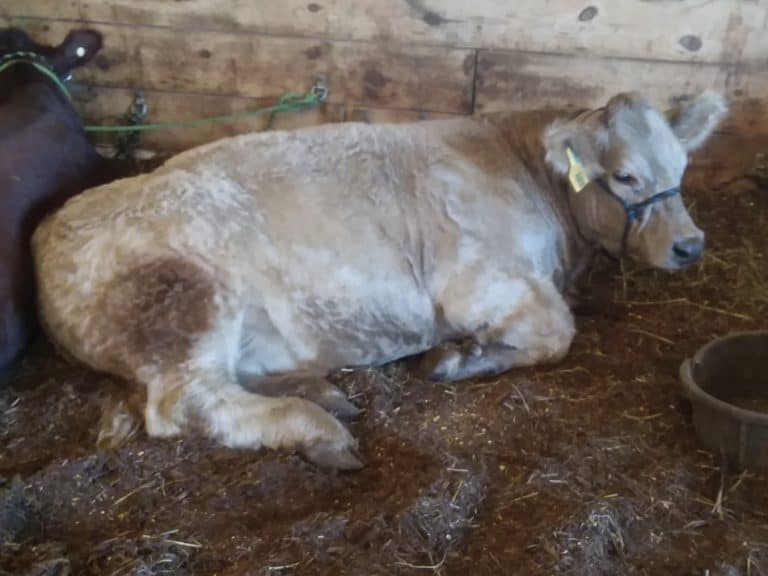Feeding Your Small Herd of Cattle: Feedlot or Pasture?
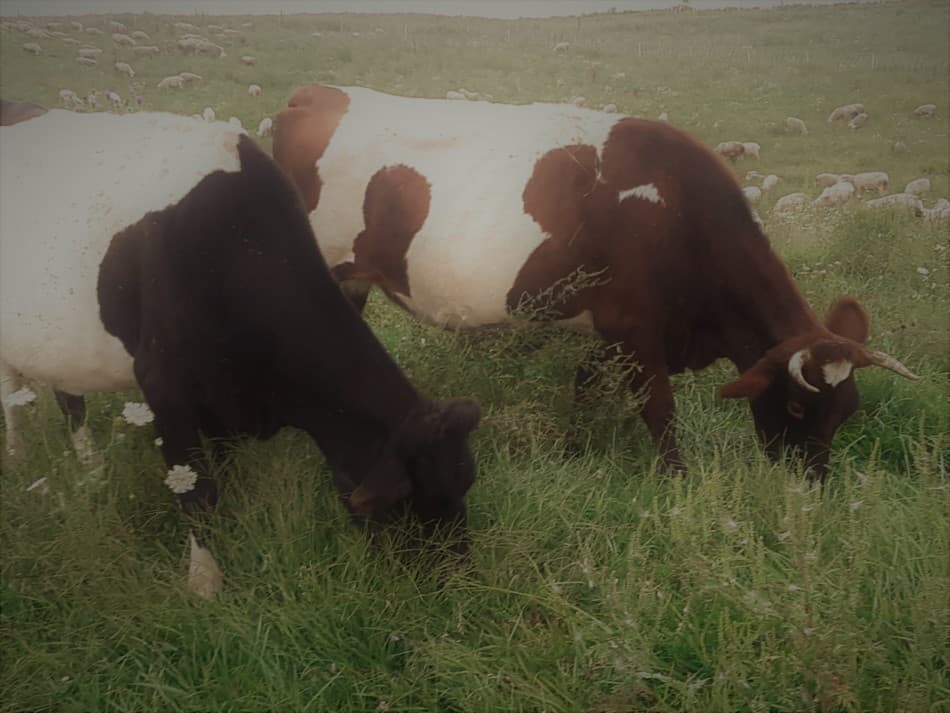
How should you feed your small herd of cattle? Let’s look into feedlot vs pasture fed: why you would choose one over the other and what are the results of that choice.
The main difference between feedlot cattle and pasture raised cattle is the feedlot cattle have their food brought to them, whereas, the pastured cattle get their food themselves.
Grain fed vs grass fed and all other word combinations regarding how the beef cattle were raised can be confusing.
Throw in words like natural or farm raised and it gets even foggier.
Is Raising Your Own Beef Worth It? is an article I put together to help beginners figure up a budget for their cattle to know if it is actually sensible to raise your own beef or buy from your neighbor.
How to determine what you should feed your animals is more complicated than industry hype.
You need to fit your cattle management to your situation.
Using Grass To Feed Your Herd gives you tips on raising grass fed beef.
Cattle are kept and fed in a feedlot
A cattle feedlot is a pen or paddock where all of the feed for the cattle is brought to them.
It can be a large or smaller pen, outside or inside a building.
Cattle health is the key to a feedlot being okay or not okay
As long as the cattle are healthy, a feedlot raising system may be the most appropriate way to raise cattle for the area at the time.
This is an animal husbandry issue. Are the cattle well cared for? Slick hair coats? Alert to you being there but not freaking out when they see you?
Then the cattle are doing fine.
Don’t get hung up on the word “feedlot” pay attention to animal health and condition.
Unacceptable feedlot conditions are more like this example: Belly deep in “mud” is actually belly deep in poop, not a healthy place to live.
This type of feedlot is obviously unacceptable and an example of poor animal husbandry.
Cattle feedlots can stink
If you cram a bunch of cattle into a tight space, then it will stink. If the cattle are given plenty of space then they don’t need to stink.
The “stink” is too much manure for the area. Trap the manure with more bedding or move the cattle.
Cattle are in a feedlot to bring them food
The purpose of putting cattle in a feedlot is to give the cattle all of their feed in an enclosed area.
In a feedlot feeding situation, the farmer or rancher brings all of the feed the cattle are going to eat to them.
There is no feed growing in the pen, even if the cattle are in a paddock or pasture, all of the feed is brought in to them.
So why go to all of this trouble when the cattle could just go eat grass on their own?
The main reasons for putting cattle in a feedlot are time to finishing and available space on the farm or ranch.
Beef: Grass Fed Vs Grain Fed gives you a bit of clarity on these commonly used and potentially confusing terms.
Feedlot cattle will finish faster
Cattle having all of their feed brought to them means they will eat the most calories per day and grow the faster.
The main attraction to a feedlot system is speed.
Especially since most farmers would be feeding a ration high in grain, something that would be tough to do if the cattle were out on a big pasture.
High grain rations are fed to have the cattle get the most calories per day so they will grow the fastest.
After all, you don’t get paid to feed the cattle, you get paid to sell a finished market steer.
The faster the steer reaches finishing weight the sooner you get paid.
Feedlots do not have to be based on high grain feeding, but the larger feedlots in the U.S. are feeding high levels of grain per day per head.
Acreage constraints can be eased with feedlot
Many farms and ranches do not have the space to keep all of the cattle to finishing weight.
Even the huge ranches in the western part of the country do not keep most of their cattle to market weight, they do not have the feed.
The amount of cattle the land can support is called carrying capacity.
If your have more cattle than the carrying capacity of your land, you will need to sell some or set up some sort of feedlot.
This goes for large ranches and people raising some animals in their backyard.
Around here (Ohio) it is not unusual for a family with a yard to raise a few steers.
Once the grass in that section of the yard runs out, these cattle are basically feedlot animals, since all of their feed is brought to them.
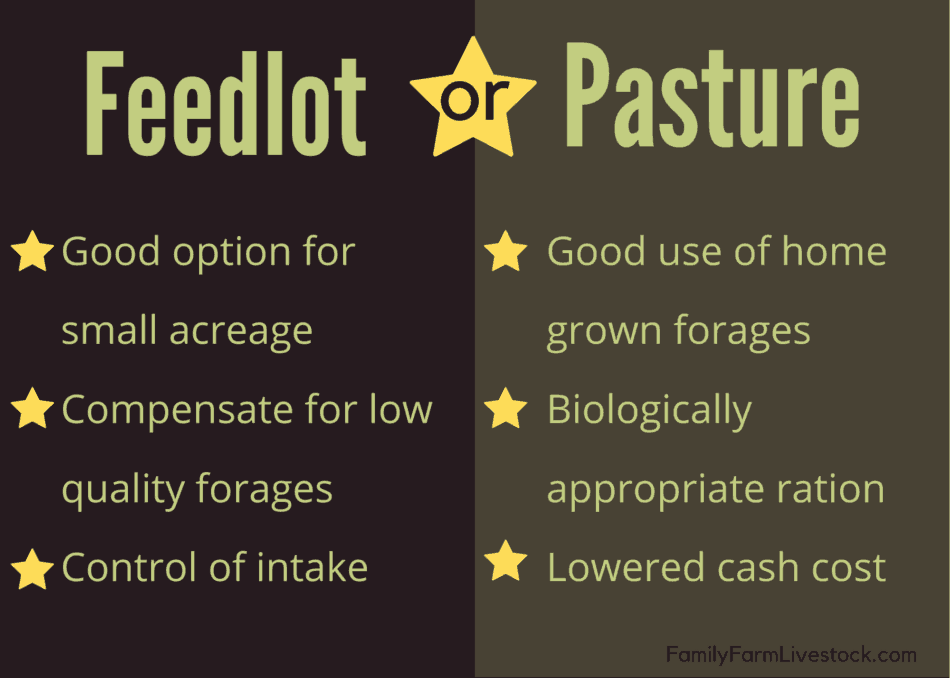
Not all cattle are finished in feedlots
Not all cattle are raised in feedlots, but most cattle raised in the U.S. would be finished in a feedlot.
If your land is already maxed out feeding the main herd of brood cows and you do not sell the weaned calves, a feedlot is your option.
If you don’t want to go the feedlot route, sell some cattle or get access to more land.
Most farmers and ranchers choose to put their cattle in a feedlot to get the fastest growth and put more marbling into the meat.
Grain fed beef is easy to get fat (marbled) and fat in the meat equals flavor.
Many beef producers believe that grain feeding is the only way to get well marbled meat.
High grain diets are hard on cattle
To be clear, grain is not needed to feed cattle, they can grow just fine without ever eating any grain.
The grain facilitates faster growth since it is higher in calories than forages or grass.
The health problems associated with feedlot cattle, the stuff all over the news, are for high grain rations in feedlots.
If the cattle have plenty of hay available to eat while in the feedlot they will balance their own needs.
Things get dicey when the forage or hay component is removed in order to push the cattle to eat more grain.
Too much grain gives the cattle digestive problems.
Cattle are ruminants, meaning they are biologically designed to eat roughages (hay, grass, forages) and need these roughages to have a properly functioning digestive system.
Eventually, if you give them too much corn too quickly, it ulcerates the rumen; bacteria escape from the rumen into the blood stream, and end up in the liver, creating liver abscesses. … Most cows on feedlots eating this rich diet of corn are prone to having their livers damaged.Interviews – Michael Pollan | Modern Meat | FRONTLINE | PBS
https://www.pbs.org › wgbh › pages › frontline › shows › interviews › pollan
Cattle feedlots can be good or bad, it’s management
There are plenty of people raising healthy cattle in what is technically a feedlot. Like the backyard cattle raisers around my part of the country.
We always raised our dairy heifers this way, but in a barn.
We needed all the pasture we could get for the milkers, so the younger stock had to be inside. Not an ideal situation, but we had to choose.
Unfortunately, the name feedlot also applies to mega, industrial concentrated stink pens that are basically manufacturing meat.
These industrial feedlots just want the cheapest, fast growth per pen.
More cattle per pen equals more money per pen. Notice I didn’t say anything about cattle happiness or health!
Don’t buy this manufactured meat and certainly don’t raise your cattle this way!
Pastured cattle get their own food
Pasture is any area where the cattle go out and eat the plants growing in that area.
In addition to the normal big field of grass that comes to mind when you think of a pasture, a pasture could also could be part of a crop field, the edge of a woods or just a sectioned off part of someone’s yard.
When on pasture cattle are getting a large portion of their daily food, maybe all of it, from the plants.
Pastured cattle, or other animals, could be given supplemental grain as well, this depends upon the farming operation.
All beef cattle that I know of would start out on pasture or range, meaning beef cattle in the U.S. all are on pasture for at least some of their lives.
Finishing cattle on pasture takes time
Cattle would be finished on pasture when the farmer or rancher:
- has a market for the grass only meat
- has plenty of carrying capacity for the younger stock plus the main herd
- lives where buying in grain is just not economically viable.
Most commonly, the pasture finished beef is being sold to people who are wanting 100% grass fed and finished beef and are willing to pay the extra price for the extra work that goes into it.
100% grass fed and finished is doable, it just takes time and on point management.
Wondering about all the different terms and how to sort it all out read my article Beef: Grass Fed vs Grain Fed.
Most people do not finish their cattle on pasture
Hardly anyone finishes their cattle on pasture.
This was common practice before easy access to chemicals and improvements in transportation made grain cheap and relatively easy to get.
With easy access to lots of grain, the fastest way to finish cattle is on grain.
Pasture finishing cattle takes longer, a steer will be 26-28 months old when it is fat enough to make good beef.
This is assuming that the grass during the growing season and the hay for the winter has been top quality, if not it will take longer.
Properly finished grass fed beef is super
Maybe you have heard that grass finished beef is bad, gamey or has poor marbling.
This is certainly possible, and one of the main arguments against grass finished beef, but it’s only half of the story.
Giving the cattle time to get fat will put the marbling and therefore the flavor into the meat.
The bad taste experiences come from beef harvested too soon, so there was not enough fat in the meat to provide flavor.
Greg Judy has wonderful videos on grass finished beef
If you are looking for some guidance on finishing cattle on grass look to Greg Judy of Green Pastures Farm.
He is in Missouri and has tons of videos showing his system, has written two books on pasture finishing cattle and teaches seminars.
I love his YouTube channel, check it out.
There are plenty of other speakers and authors who are finishing cattle on pasture. Greg Judy’s videos are just the start.
Once you watch one of his videos tons of other stuff will come up, start exploring!
Pasture finished cattle are healthy
Pasture finished cattle are being fed as they are meant to be fed.
Cattle are ruminants, meaning they are designed to grow well and be healthy on grass and other forages.
The biggie here is not only are the cattle healthier, so are you when you eat the meat from pasture raised and finished cattle.
An easy one is the Omega 3:6 ratio is correct. This ratio is off, by quite a bit, in grain fed meats.
Additionally, pasture fed and finished cattle are not stinking out the farmer or the neighbors.
Pastured cattle are, if managed appropriately, improving the soil by increasing organic matter and soil microbial life.
There is no run off from grass fed and finished cattle, no stink and no acid loving e. coli lurking in your burger.
The health implications for pastured livestock, not just cattle, reach much further than the animals themselves. Good for the cattle is just the start.
Beef Cattle: Buying Your Herd shows you things you need to look for with your potential herd and where to get started with your search to find them.
Cattle management is area specific
It’s tempting to say all cattle should be (fill in the blank).
That would be handy, just do whatever the current social push or the last guy or gal you saw on a video is promoting. No thinking, you just follow the plan.
That “one plan for all thing” is not reality.
Your farm, your abilities, your money, your facilities, your specific animals, the year’s or season’s weather, etc. all need to be accounted for in your management.
You can not possibly do what everyone else is doing, because you and everyone else are not carbon copies of each other.
Some things are universal, no matter where you live: keeping the cattle healthy and happy and wanting your cattle to grow well.
The specifics, what the cattle eat, how they are housed. etc. are specific to you and your situation.
Using your specific situation to raise happy, healthy cattle is your challenge.
Summary
If you’ve read this far, you have no doubt picked up on my bias. I’m very pro grass! However, at least for us, this is a business.
So sometimes I have to do the money thing vs. the ideal thing and work towards my ideal as we go along.
Is feedlot beef bad, no. As long as the animals are happy and healthy, meaning forages are mandatory! feedlot beef will be great.
The problem comes with jamming scads of cattle into a small area on a high grain diet, instead of giving them space, roughages and a nice place to live.
Pasture fed and finished cattle will take longer from birth to market.
Pastured animals will take more management skills, since you now have the land and weather thrown in to mix.
Pasture fed is doable. It’s being done now on multiple farms all over the U.S.
If you are interested in pasture feeding and finishing your cattle, look into it. The information is available, just waiting for you to discover!
